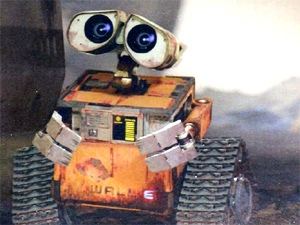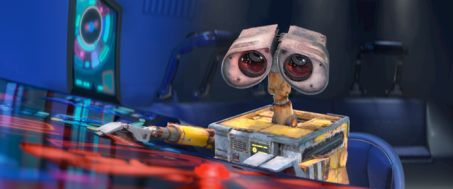You are hereArt & Poem
Art & Poem
Graphic novels, all grown up – story-telling art form with both image and text, the medium’s influence rises and broadens

(quote)
In 1969, the American writer John Updike famously declared, "I see no intrinsic reason why a doubly talented artist might not arise and create a comic strip novel masterpiece."
The statement was immediately ridiculed by literary traditionalists, who disparaged comics as a "low" medium unworthy of serious critical attention. But it became a rallying cry among comic book creators, long second-class citizens in the art world.

Forty years has proved their prescience. Graphic novels – usually defined as extended-length illustrated books with mature literary themes – have risen to widespread prominence, spurred on by the work of respected talents such as Art Spiegelman ("Maus: A Survivor's Tale") and Will Eisner ("A Contract With God").
Graphic novel sales in Canada and the United States hit $375 million in 2007, five times the figure reported in 2001, according to ICv2, a pop culture site. "Jimmy Corrigan," a book by Chris Ware, has sold hundreds of thousands of copies alone; "Persepolis," originally a graphic novel by Marjane Sartrapi, picked up an Oscar for best animated film in February.

The world of comics and graphic novels is in the midst of a creative renaissance that may be greater than the dawn of the Marvel Universe in the 1960s. This development has been a longtime coming, considering that the beginnings of both newspaper comics and the cinema occurred at roughly the same time in the late 19th century. Film quite quickly matured into the 20th century's great American art form, while comics remained relatively insular and ignored by adults.

Alternative graphic novels are represented on film as well (Road to Perdition, Ghost World, American Splendor, Persepholis) and are increasingly making their presence felt at traditional book store chains where there are now entire sections devoted to graphic novels as well as manga (Japanese graphic novels, which are another subject entirely).
Generation Next folks currently coming-of-age are almost as conversant about the latest graphic novel as Generation X-ers were about grunge music. The main difference is that graphic novels show no signs of being a temporary trend. Indeed, they may be here to stay, well into the 21st century.
(unquote)

Images courtesy of Marjane Satrapi. Art Spiegelman, Naoki Urasawa, Neil Gaiman, and Evanston Review
Original Source: Christian Science Monitor and Evanston Review
Robot with heart of gold falls in love: Wall-E, a beautiful Pixar vision, full of charm, humor, suspense, romance, and magic

(quote)
Groundbreaking yet familiar, part romance, part sci-fi, Pixar's latest work is wonderful and full of wonder. - Kenneth Turan, Times Movie Critic
If Pixar Animation Studios has an enviable record of consistent success -- and with a worldwide box-office gross of $4.3 billion from its eight films, it certainly does -- it's because the company has an uncanny gift for pushing things further without pushing too far. Pixar's adventurous new film, the one-of-a-kind "Wall-E," shows how it's done. Daring and traditional, groundbreaking and familiar, apocalyptic and sentimental, "Wall-E" gains strength from embracing contradictions that would destroy other films. Directed by Pixar stalwart Andrew Stanton, who co-wrote and directed the Oscar-winning "Finding Nemo," "Wall-E" is the latest Pixar film to manage what's become next door to impossible for anyone else: appealing to the broadest possible audience without insulting anyone's intelligence.

The origins of "Wall-E's" story, as related in the film's teaser trailer, go back to 1994, when Pixar honchos held a now-celebrated lunch to spitball story ideas, which became "A Bug's Life," "Monsters, Inc." and "Finding Nemo." "Wall-E" is the last of that group to get made, in part because elements of it are so unconventional. For one thing, the film's exceptional first half hour or so lives and breathes on screen with just about zero human dialogue. But with the storied Ben Burtt, who did the job on "Star Wars," creating all kinds of noise as the film's sound and character voice designer, as well as music by Thomas Newman, you won't miss those words at all. You also won't miss them because the world of "Wall-E," created by production designer Ralph Eggleston and his team, with the advice of high-powered cinematography consultants Roger Deakins and Dennis Murren, is so remarkable. The time is 800 years in the future and the setting is our own Earth, but it's not an Earth anyone would want to recognize.

Not to put too fine a point on it, our planet is a disaster, a bleak and disheartening ruin where every available surface is covered by towering skyscrapers of trash. It got so bad that Buy n' Large, the conglomerate that has somehow taken charge of the planet, leaned on the entire human population to leave with a "space is the final fun-tier" campaign that featured slogans such as, "Too much garbage in your face? There's plenty of space out in space." Though not likely the main reason the film was made, "Wall-E" can't help but send out a powerful and even frightening environmental message. Though G-rated, its dystopian vision (shot by Jeremy Lasky and Danielle Feinberg) of what the perils of consumer excess have in store for the planet is unnerving without trying too hard.
One reason "Wall-E" is as audience-friendly as it finally is is the presence of the endearing title character, whose name is an acronym for Waste Allocation Load Lifter -- Earth Class. What that means in practical terms is that Wall-E is a robotic trash compactor who has been quietly doing his job attacking Earth's endless mountains of refuse for 700 years. Unless you count his pal, a nameless but convivial roach, Wall-E is the only thing still moving on the entire planet. Given all that, it's to be expected that Wall-E, whose large binocular eyes and narrow neck turn him into a squat, mechanical E.T., has developed a few personal eccentricities over the years. For one thing, he's quite the collector, squirreling away everything from old Rubrik's Cubes to light bulbs to an actual living plant.

More than that, this set-in-his-ways old bachelor robot has developed a fixation with the movies. Not really the movies, but one movie in particular, the only video he's got. It is, of all things, "Hello, Dolly!" and screenwriters Stanton and Jim Reardon had the shrewd idea of opening the film with the jaunty lyric, "Out there is a world outside of Yonkers," as the camera somberly pans both the universe and the ruins of Earth. What really entrances "Wall-E" about "Hello, Dolly!" is the spectacle of people expressing emotion and connection by holding hands. Not a word is spoken, but we understand that this lonely Robinson Crusoe, like so many movie creatures before him, would like nothing better than to hold hands with another entity. And then it happens. A spaceship lands in Wall-E's neighborhood and leaves behind a sleek white oval-shaped probe-droid with bewitching blue eyes named Eve (for Extra-terrestrial Vegetation Evaluator), sent to Earth to find signs of life. High tech and armed with a laser weapon that pulverizes anything in sight, Eve fascinates Wall-E and he nervously scuttles around after her, fearful but intoxicated by her every move.

Though this wordless section of the film, punctuated only by Wall-E's frequent and idiosyncratic croak of "Eve," is in some ways merely a set up for the second half, it is easily the most memorable and distinctive part of the film. This segment, a kind of song without words, is a world-creating work of pure imagination that has been thought out to the nth degree.
"Wall-E's" second half involves the dauntingly overweight humans who have sent the probe (and who are shrewdly not pictured in any publicity material.) They've lived for centuries on a cruise liner-type spaceship called the Axiom run by a barely functional captain (Jeff Garlin) in thrall to a Hal-type eminence called Auto, voiced, in a nod to "Alien," by Sigourney Weaver. This part of the story gets increasingly familiar and sometimes borders on the predictably sentimental. But along with these inevitable elements of calculation, "Wall-E" never loses its sense of wonder: wonder at life, wonder at the universe, and even wonder at the power of computer animation to create worlds unlike any we've seen before. How often do we get to say that in these dispiriting times?
(unquote)
Images courtesy of Disney/Pixar, mlive.com, hamptonroads.com
Original Source and Video: LA Times
Special Gallery:Showbiz 7s: Movies that inspired 'Wall-E'
Related Article: :'Wall-E' draws design inspiration from Apple
Fun Card: "I am fond of pigs. Dogs look up to us. Cats look down. Pigs treat us as equals." - Sir Winston Churchill
No question is so difficult to answer as that to which the answer is obvious. - George Bernard Shaw

No question is so difficult to answer as that to which the answer is obvious.
- George Bernard Shaw
ebook Quotable Wit and Wisdom - Collection 1 available via Amazon Kindle eBooks and Apple iBookstore





















